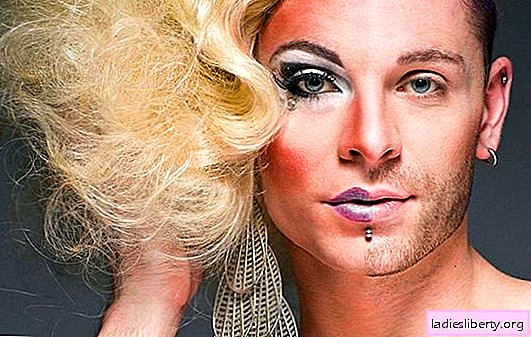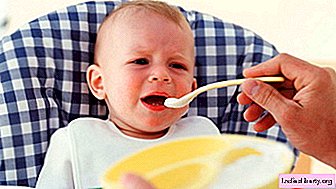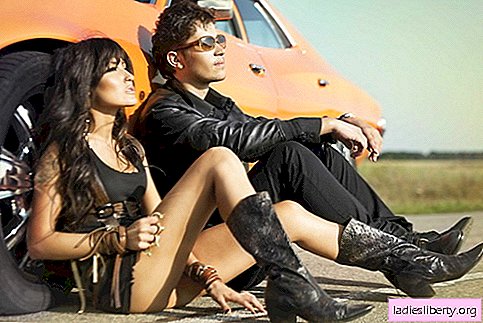
Despite all the efforts of stylists and cosmetic companies, men's makeup fashion has been in its infancy for decades now. Outside a narrow circle of models and actors, eye shadow or lipstick on the lips of men can be seen extremely rarely, but this was not always the case.
If today an ordinary man and decorative cosmetics are mutually exclusive concepts, then in certain periods of history they were almost synonyms.
Refined Egyptians and Glamorous Romans
Frescoes and drawings on papyruses brought to us a very peculiar appearance of the ancient Egyptian nobility: thorough makeup, which included darkened cheeks and long black “arrows” on the upper eyelids, was an integral part of it. So painted not only women but also men. The most interesting thing is that the eyes failed not so much from aesthetic as from practical considerations: the Egyptians believed that makeup would protect them from diseases. Already in our time, French scientists who analyzed the composition of ancient Egyptian eye paint confirmed that it really included minerals that have a healing effect.

The ancient Egyptians not only painted their eyes, but also carefully epilated the body. The Romans took care of themselves in a similar way: strangely enough to imagine it, but Julius Caesar and other generals and politicians regularly removed vegetation from the body.
Aromatic oils were popular, not only softening the skin, but also giving it a pleasant smell. As for male make-up, interest in him appeared in the late period of the Roman Empire, and was interpreted by moralists as a sign of moral decline.
After the adoption of Christianity and the fall of the Roman Empire, men forgot about cosmetics for a long time: however, medieval knights did not care much about ordinary hygiene. The situation begins to change only in the Renaissance.
Powder and sword
The French court has revived fashion for men's cosmetics: since the time of King Henry III, courtiers began to powder and let their eyes down. A little later, in the XVII century, makeup becomes a familiar thing for any nobleman who wants to please the ladies.

Young people tinted their lips with carmine, carefully plucked their eyebrows, giving them an ideal shape, glued tiny black taffeta figures on their faces - the so-called “flies”, gave the thin mustache a desired bend with the help of special ointments, and summed up the mascara on the eyes.
All this did not prevent them from being courageous duelists and brave grunts, and the one who dared to doubt their sexual orientation risked being pinned to the edge of the sword.
In the XVIII century, not only nobles began to paint, but also representatives of the "third estate".
Leaving the house, both merchants and scientists put on indispensable wigs and lightly dusted their faces so that their forehead and nose would not shine. Many flushed their cheeks.

In a big move there were lead white: they ideally masked skin imperfections, making it porcelain, but they did not suspect the harm done to their health. Men polished their nails (they still haven’t invented varnish), followed the whiteness and smoothness of their hands, chewed nutmeg to freshen their breath.
The ideal 18th century gentleman spent as much time in the fencing hall as he did in front of the mirror.
Powdered faces, along with powdered wigs, disappear only at the beginning of the XIX century, and disappear for a long time, for a whole hundred years.
Decadence and White Guards
In the XIX century. cosmetics in Europe was considered unacceptable even for women, to say nothing of men: the only representatives of the stronger sex who put on their faces were actors, but they also avoided even a hint of makeup outside the stage like fire.
Everything changed at the beginning of the 20th century, when decadence became the dominant trend in art.
He put forward new requirements for appearance: the strong, pink-cheeked gentlemen were replaced by a refined, languid esthete with a pale face and large expressive eyes.

Those who were unlucky with pallor of their face had to powder with rice powder. The eyes were “enlarged” with the help of dark shadows that were applied to the eyelids. If you look at old silent films, it is easy to notice that the makeup of actresses and actors is exceptionally intense: men painted a little less.
Aristocratic pallor was so popular that even those who seemed to be more than far from decadent salons acquired boxes of powder.
During the Civil War, white officers found time to powder their faces, and their makeup did not shock anyone.
In his memoirs, A. Vertinsky recalls that General Slashchev, famous for his courage and cruelty, did not disdain powder. However, Vertinsky himself rarely appeared in public without cosmetics in his youth. Moderate make-up was considered quite acceptable for a secular person until the end of the 1920s, until the militaristic winds of the pre-war era dispelled the perfumery and cosmetic heritage of the decadence era.
Since that time, men's makeup has remained the destiny of either creative personalities or representatives of individual subcultures. Will the attitude towards him ever change? Only time can answer this question.
So far, sales of men's cosmetics are increasing every year, but we are still talking about skin and hair care products: shaving creams, sunscreens, shampoos, gels, and also products designed for caring for a beard.
TOP-12 most essential cosmetics for a modern man











